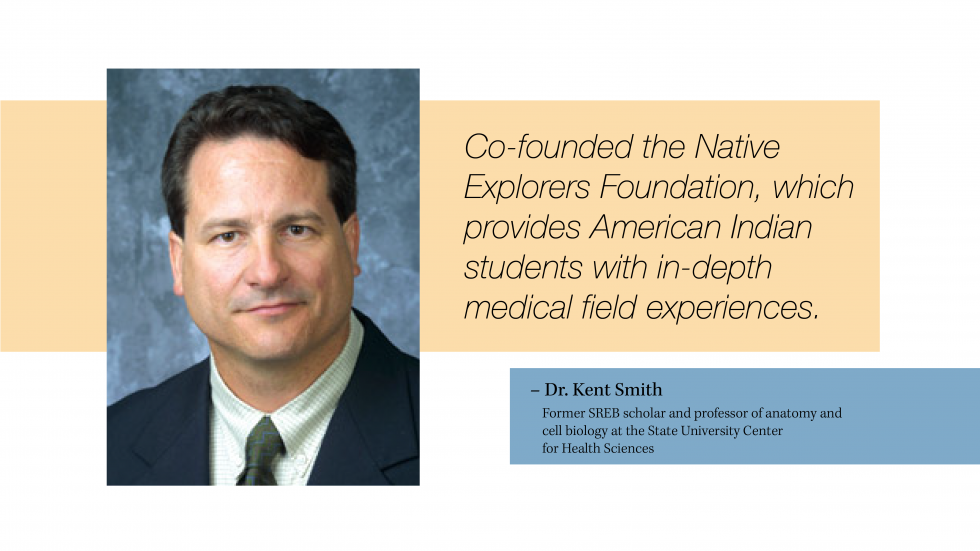Finding Faculty
SREB-State Doctoral Scholars Program graduates paying it forward
As if the percentages of African-American or Hispanic faculty aren’t stark enough, consider the shortage of Native American scholars: a miniscule 0.01 percent of postdoctoral faculty and scholars nationally.
“It’s no surprise that I don’t run across more Native Americans as colleagues,” said Dr. Kent Smith, a former SREB scholar and now a professor of anatomy and cell biology and associate dean at the Oklahoma State University Center for Health Sciences in Tulsa, one of the state’s medical universities. “As an under-graduate and as a graduate student … I don’t know of any classmates who were American Indian, and I certainly had no administrators or faculty who were American Indians.”
Compounding the situation, only a small fraction of Native American professors work in the STEM fields, Dr. Smith said. He credits the SREB program as a major factor in his completing a Ph.D. in zoology at the University of Oklahoma.
Dr. Smith first discovered the SREB program when a colleague was selected. “I was pardoned from a huge workload at a community college,” he said, “teaching four different preps and a lab with little time to complete research. It really made the difference between having a degree and losing it at the end.”
All SREB scholars are encouraged to give back to their communities by becoming mentors–and by starting substantive programs that mentor underrepresented graduate, undergraduate and younger students.
Dr. Smith co-founded the Native Explorers Foundation, which annually provides American Indian students with in-depth experiences in medical fields by taking them to archaeological digs in the remote West where youngsters can learn about bones.


